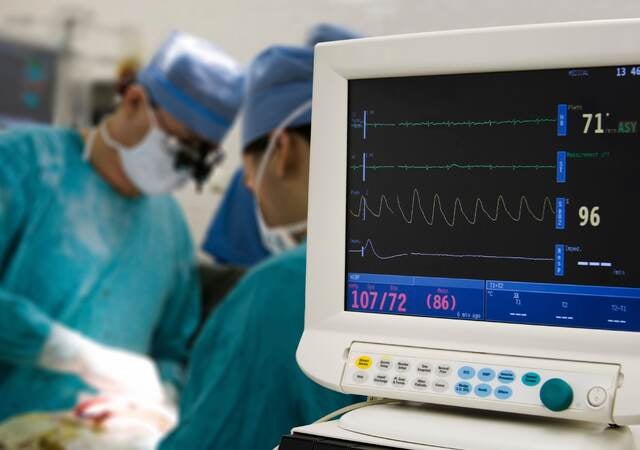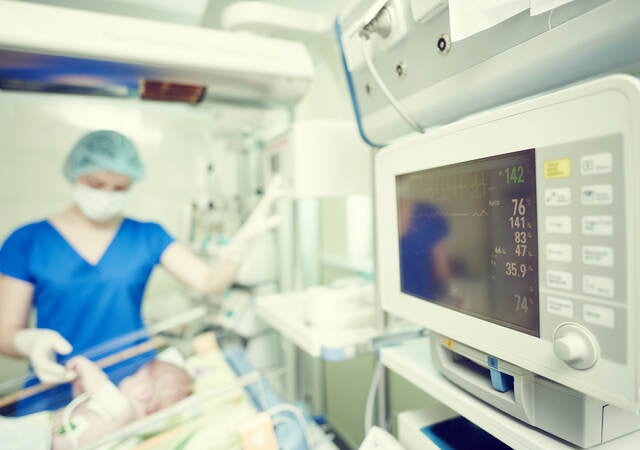January 25, 2024
By Sarah Fitzgerald
The US Food and Drug Administration’s (FDA) division overseeing medical devices has released its 2023 annual report showing a slight increase in device clearances and approvals compared to 2022.
The FDA Center for Devices and Radiological Health (CDRH) annual report also highlights the unit’s achievements over the past 12 months. Below, Emergo by UL examines key points in the CRDH report.
Background on US FDA CDRH
For background, CDRH has 2,230 dedicated staff members and they received about 19,100 submissions of all types in 2023. This represents an increase of approximately 200 staff members and 300 submissions as compared to their 2022 annual report.
The FDA mission, as it pertains to medical devices, can be summarized as:
- Protecting the public health by ensuring the safety and effectiveness – and as of 2023 the security – of medical devices.
- Advancing the public health by helping to speed innovations.
- Fostering the development of medical products to respond to emerging public health threats.
We’ll summarize their annual report in relationship to the CDRH mission and provide some context based on our knowledge and experience.
Protecting the public health
FDA protects the public health in two primary manners: pre-market requirements and post-market requirements. CDRH highlighted both manners of protection in their 2023 annual report.
Protecting the public health: Pre-market requirements
Pre-market requirements include FDA review of submissions, including those to align with the FDA (like Q-submissions, 513(g) requests, etc.) and submissions to allow a company to start marketing a device (510(k)s, Premarket Approval (PMAs] applications, etc.). By reviewing these applications before allowing devices to be sold, CDRH helps ensure that the devices have been evaluated and tested in a reasonably consistent manner to help ensure safety, effectiveness, performance and security of medical devices.
As previously noted, CDRH received about 19,100 submissions in 2023. They did not specify the types of submissions, so Emergo by UL conducted a search to understand approximate numbers. Note that this search was technically for when a device is authorized rather than what submission was made, and denied submissions don’t show up on these searches, so these numbers will not exactly match up to submissions received, but are sufficient to provide a high-level picture. In 2023, FDA authorized:
- 3,326 510(k)s
- 133 Emergency Use Authorizations (EUAs) related to COVID-19
- 5 EUAs related to Monkeypox / mpox
- 47 De Novo reclassification requests (de novos)
- 36 PMA applications plus 2,180 PMA supplements
- 3 Humanitarian Device Exemptions (HDEs) plus 77 HDE supplements
Therefore, overall, the FDA authorized a total of 5,807 marketing submissions over the course of 2023, slightly higher than the 5,731 authorized in 2022. The balance, about 13,300 submissions, presumably consist primarily of Q-submissions, 513(g) requests, and Investigational Device Exemptions (IDEs) submitted before a marketing authorization submission, plus some marketing submissions that CDRH either declined to review or reviewed but did not authorize.
LDT regulatory changes: CDRH has announced a proposed rule to require most laboratory developed tests (LDTs) to be phased out of the general enforcement discretion approach and instead to be regulated in the same manner as standard in vitro diagnostic (IVD) devices, including requiring any applicable marketing applications. Emergo expects that most LDTs will require either a de novo reclassification request (de novo) be granted or a 510(k) be cleared. This could be quite challenging for many LDT developers, as they often are not traditional manufacturers, but will help ensure the safety and effectiveness of these devices that can influence the care regime for patients.
Wider focus on cybsersecurity: CDRH has increased their expectations related to cybersecurity in the past year, including what information needs to be provided in a premarket submission, like a 510(k). Indeed, in the past three years, CDRH staff focused on cybersecurity has more than doubled. While providing additional data can ensure that cybersecurity is being addressed, the significant amount of additional information can slow down reviews of submissions to the FDA, both on the side of the FDA and on the side of questions being asked to the sponsor which can lead to longer times to respond to the FDA. CDRH appears to be asking for significant cybersecurity information even for 510(k)s where there is an update to a device that does not directly affect cybersecurity. The FDA notes that taking these robust actions helps ensure that medical devices in the US are the most secure in the world.
Protecting the public health: Post-market requirements
Overall, post-market requirements were not reported to have significantly changed over 2023. CDRH discussed how they actively pursued post-market communications for safety concerns including recalls through various formats, including Facebook posts, LinkedIn posts, X posts, emails, letters, public and advisory committee meetings and safety communications for a variety of devices.
Advancing the public health
The CDRH annual report focused heavily on how the FDA perceives that they are advancing the public health.
Perhaps most importantly, CDRH published 71 new or updated guidance documents. Guidance documents are critically important for industry to understand FDA’s current thinking and to be able to ensure that they are addressing FDA concerns. When Emergo reviewed guidance documents from this year, which only shows the most recent versions, we only found 63 that included CDRH, suggesting that some had been updated multiple times over 2023. The main topics of guidance were:
- Device Type Specific: 25
- Clinical Testing Related: 7
- Software & Cybersecurity: 6
- Testing (Other than Clinical or Software & Cybersecurity): 6
- 510(k)s: 5
All other topics had one or two guidance documents published, and included the topics of post-market requirements, other marketing submissions (PMAs, HDEs), other submissions (Q-Submissions, breakthrough device (BTD) and safer technology program (STeP] designated devices), device shortages, real world evidence and combination products.
The CDRH annual report highlighted how the release of some of these guidance documents are intended to enhance and adapt the 510(k) program to continually improve the safety and effectiveness of medical devices. As the 510(k) program is intended to ensure that a device is at least as safe and effective as a currently marketed device, this appears to be a significant shift in the regulatory paradigm that could make it more challenging to bring devices to market. Emergo notes that the FDA has the authority to revoke a marketing authorization if there is a safety or effectiveness concern.
CDRH stated that there are now more than 150 regulatory science tools (RSTs) available and that they are starting to track their use. However, note that such tools have not been qualified as medical device development tools (MDDTs) and have not evaluated the suitability of these tools within any specific context of use. Therefore, the FDA generally recommends a Q-submission before utilizing these tools for any premarket submission.
CDRH highlighted how they had authorized the highest number of novel devices (excluding EUAs) in CDRH’s history, with 124 receiving marketing authorization, including 47 through de novo classification requests.
Emergo notes that the FDA appears to be more rigorously interpreting the meaning of intended use, therefore devices that would previously have been eligible for a 510(k), now must go through the de novo submission process. Emergo notes that de novos have a higher user fees (for FY2024, $145,068 for a de novo versus $21,760 for a 510(k)) and generally require significantly more testing and overall review time, including addressing FDA questions, than a 510(k). Additionally, a Q-Submission is always recommended prior to submitting a de novo, where such may or may not be recommended before submitting a 510(k). Emergo is therefore concerned with this apparent jump in de novos granted may be in part due to changing interpretations and may be increasing the time and resources needed to bring safe and effective devices to market, which ultimately could translate to higher costs for the devices and therefore for overall healthcare.
CDRH reported that it had designated 167 devices as breakthrough devices (BTDs) and 15 as safer technology program (STeP) devices in 2023. Further, they granted authorization to 29 BTDs and 2 STeP devices.
CDRH stated that they have authorized over 700 artificial intelligence / machine learning (AI/ML) devices now. They did not state how many were this year versus previous years.
CDRH launched the pilot of the Total Product Life Cycle (TPLC) Advisory Program (TAP) to allow for earlier and more frequent interactions with industry.
CDRH transitioned the Accreditation Scheme for Conformity Assessment (ASCA) pilot to a permanent program. In this program, the FDA accredits a laboratory to conduct certain tests, and then only a summary test report needs to be provided, which is expected to reduce questions from the FDA and allow quicker review by the FDA.
Responding to emerging public health threats
In response to COVID-19, for the first time CDRH received authority over supply chain and device shortages in response to a public health emergency (PHE) in 2022. They asserted that they needed greater authority and control over medical device shortages in general, and Congress granted such in the FY 2023 Omnibus legislation, allowing the FDA to require manufacturers of certain devices important for dealing with an emerging public health threat to notify the FDA of a permanent discontinuance or significant interruption in the manufacture of such devices.
The FDA was quick to begin implementing, drafting guidance on what needs to be reported and a list of nearly 300 product codes out of the more than 6,800 product codes that currently exist, or approximately 4% of devices, which will require notification to the FDA. These devices include a wide variety of products, including many personal protective equipment (PPE) devices, general devices (including tubing, tourniquets, stretchers, glucose sensors, and syringes), metabolic panel tests and life-supporting and/or life-sustaining devices (including ventricular assist devices (VADs], automated external defibrillators (AEDs], and cardiopulmonary bypass-related devices). There are thousands of manufacturers for these devices, combined.
It is not clear how the FDA will be able to curate this data in a useful fashion given the significant number of such devices and manufacturers, nor the overall impact to industry. Emergo had expected a much smaller list primarily consisting of IVD and life-sustaining and/or life-supporting devices, and believes that the draft list, if implemented as is, will present resource challenges for both industry and the FDA. Additionally, while for devices with limited manufacturers or manufacturing capacity, it seems like there could be benefits, for many of these devices that are more commodity products with multiple manufacturers, potential benefits are not as clear as other manufacturers can generally ramp up production to cover market fluctuations. It is clear that there will be additional burden for both industry and the FDA.
Other CDRH medical device regulatory topics
CDRH also highlighted various initiatives and information that don’t clearly fall within one of the categories of their mission.
In 2023, CDRH implemented the requirement for all 510(k)s to be submitted via the electronic Submission Template and Resource (eSTAR). In theory, this helps provide a more consistent submission to add industry in drafting and the FDA in reviewing 510(k)s, and so helps the FDA meet their Medical Device User Fee Amendments (MDUFA) commitments.
CDRH discussed various collaborations that they have devoted resources to throughout 2023.
CDRH issued a draft International Harmonization Strategic Plan on harmonization for medical device regulatory requirements around the world in alignment with their commitments per the MDUFA V.
Concluding remarks
CDRH conducted various activities in alignment with all three of their overarching missions throughout 2023 and continues to take steps to ensure that devices in the US are safe and effective for their intended use.
Sarah Fitzgerald is Senior Consultant, Quality and Regulatory Affairs at Emergo by UL
Request more information from our specialists
Thanks for your interest in our products and services. Let's collect some information so we can connect you with the right person.






